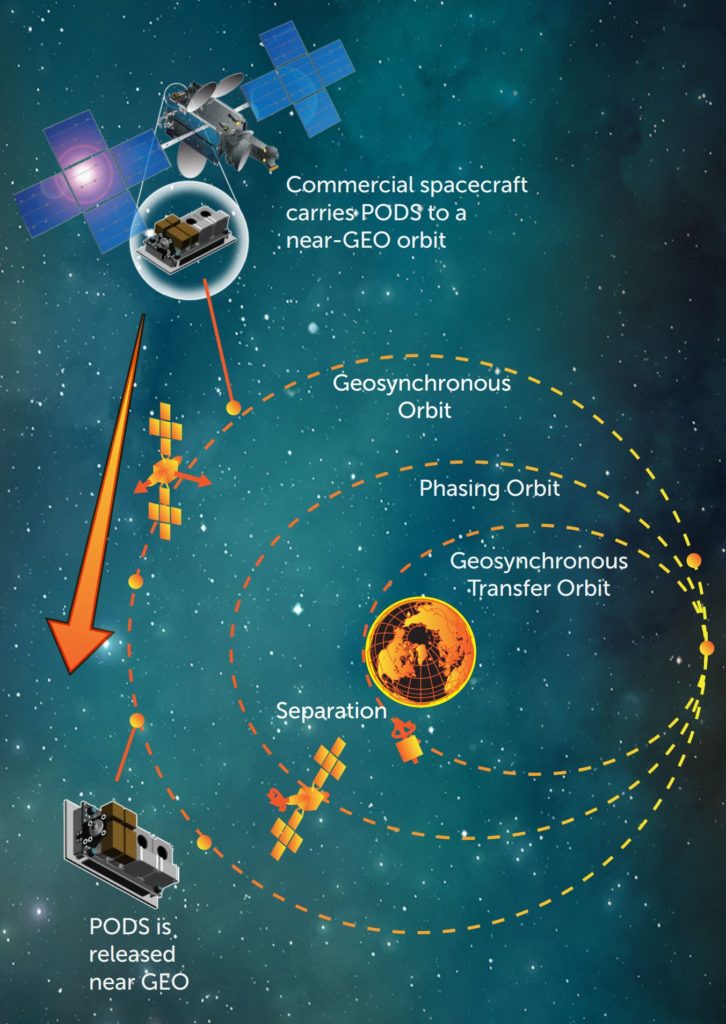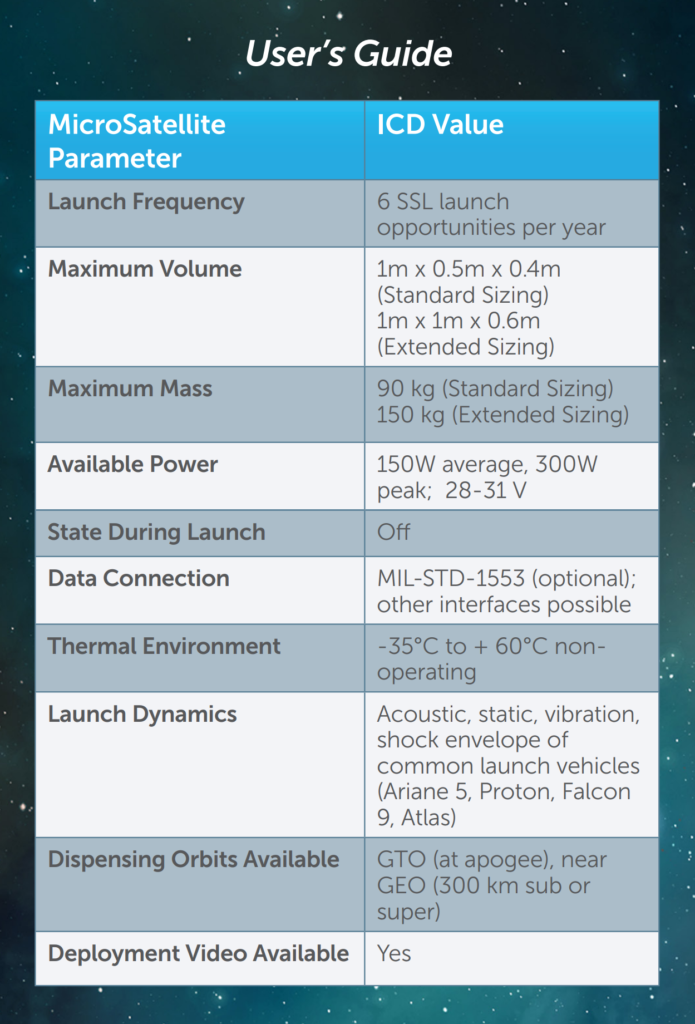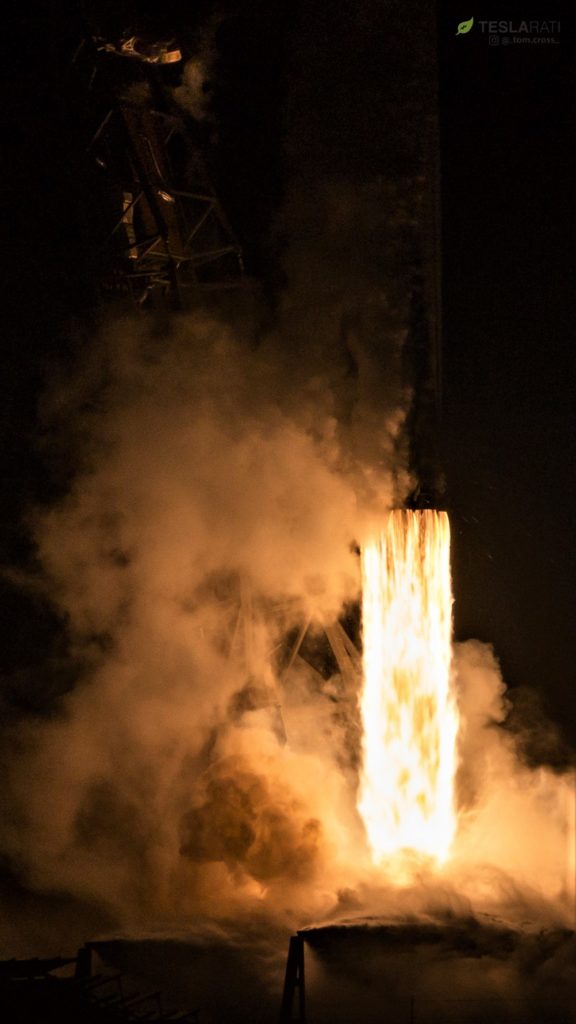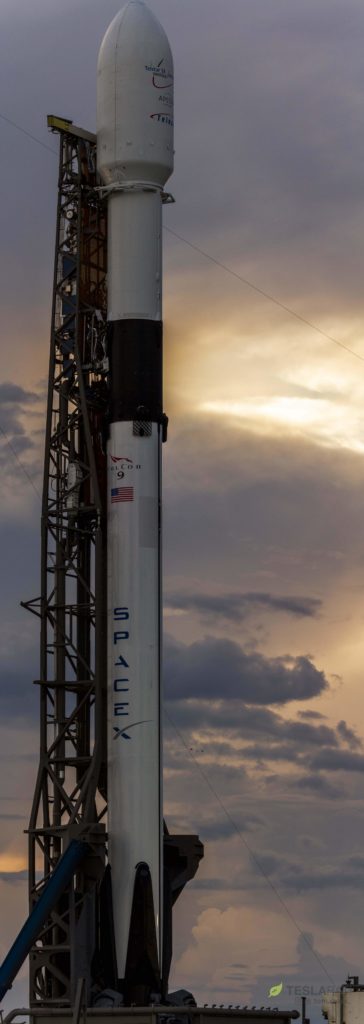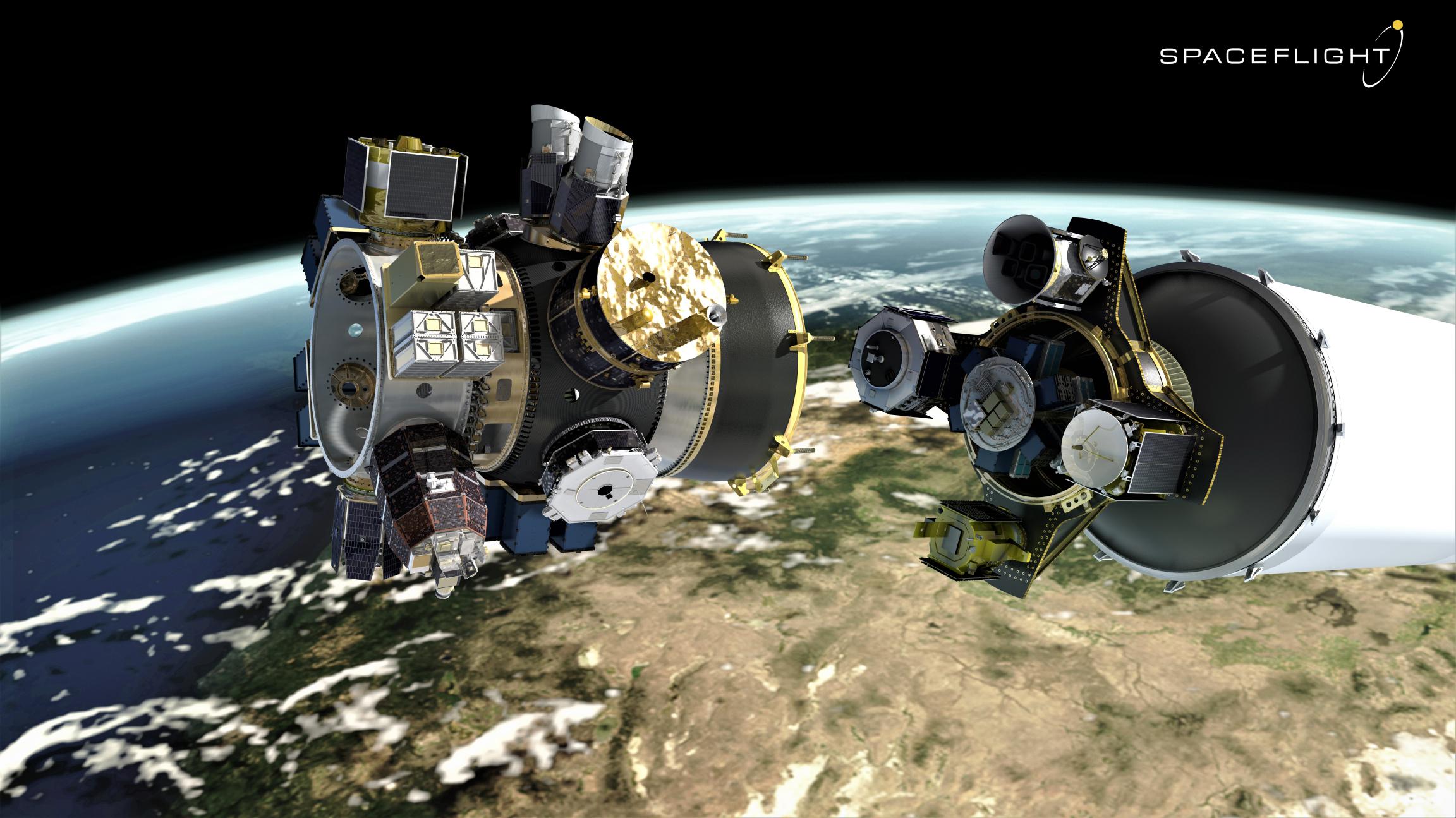

News
SpaceX Falcon 9 rideshare launch to send a commercial lander to the Moon in 2019
According to a press release published on September 11 in conjunction with the 2018 World Satellite Business Week conference, satellite rideshare organizer Spaceflight Industries and SpaceX are on track for the first functionally dedicated rideshare mission to a relatively high-energy geostationary transfer orbit.
Expected to occur as soon as early 2019, Spaceflight has arranged the addition of “several undisclosed payloads” but was able to confirm that Israel-based company SpaceIL’s lunar lander spacecraft – deemed Sparrow – will be onboard Falcon 9 come launch, potentially paving the way for the first-ever commercial spacecraft landing on an extraterrestrial planet (or moon).
Did you hear? We're offering rideshare to GTO/GSO now. https://t.co/s5i9brlSqz
— Spaceflight (@SpaceflightInc) September 11, 2018
A bit more than “Uber for space”
Although any rocket or satellite launch on its own is already a sort of wildly complex symphony, rideshare missions – potentially carrying dozens of individual satellites – up the intensity by a significant degree, demanding magnitudes more separation events (i.e. satellite deployments), a labyrinth-like hell for the payload organizer tasked with herding dozens of distinct spacecraft into one payload fairing come launch time, and often multiple orbit drop-off points.
Still, at the cost of some amount of added risk (of both failures and launch delays) and less flexibility to pick and choose orbits, rideshare customers are granted launch prices that should – in theory – be fundamentally unbeatable with dedicated launches, using an entire rocket for no more than a handful of payloads. Intriguingly, at least in the case of Spaceflight Industry’s first organized rideshare to geostationary orbit, Falcon 9’s capabilities are truly unbeatable at SI’s cost per customer, thanks to the reality that such a high-energy orbit is functionally unreachable to the array of dedicated smallsat rockets with purportedly imminent commercial launch debuts (Rocket Lab, Virgin Orbit, Vector, and others).
Watch us assemble our payload stack for #SSO-A in just over a minute: pic.twitter.com/UFXAKWkNy1
— Spaceflight (@SpaceflightInc) October 4, 2017
Even more intriguingly, it appears that this rideshare will go so far as to offer a ride to a true, circular geostationary orbit for a few copassengers, versus the highly-elliptical parking orbit Falcon 9 will place the whole payload stack in. It has yet to be specifically confirmed what the primary (heaviest) payload will be for this inaugural geostationary rideshare, but nearly all available signs are pointing towards a fairly large (5000 kilogram) communications satellite built by Space Systems Loral (SSL). Further, the satellite itself will serve as the mode of transportation to carry a number of copassenger spacecraft from SpaceX’s geostationary transfer orbit to the final circular orbit roughly 22,500 mi (~36,000 km) above Earth’s surface.
Satellite rideshares, brought to you by the US military?
The story deepens further still. All available signs also suggest a high probability that this launch will become one of SSL’s first operational uses of a currently-experimental rideshare plan known as PODS, in which fairly small satellites would quite literally piggyback on large, commercial satellites into exotic and high-energy orbits, far beyond the low Earth orbits primarily available to rideshare payloads. This could open a whole new world of affordable, cubesat-style exploration, ranging from student-led missions with unprecedented reach to fleets of NASA-funded scientific smallsats, and perhaps even self-propelled interplanetary cubesats once miniature propulsion is available.
- An SSL graphic explains the company’s PODS technology. (SSL)
- This condensed User’s Guide lists the basics of PODS ridesharing. (SSL)
- Falcon 9 B1049 lifts off from SpaceX’s LC-40 pad on September 10, producing more than 1.7 million pounds of thrust.(Tom Cross)
- Falcon 9 Block 5 will be absolutely critical to the success (and even the basic completion) of Starlink. (Tom Cross)
Funded and sponsored to some extent by US military research agency DARPA, it just so happens that an SSL-built satellite launched by SpaceX six months ago – Hispasat 30W-6, March 2018 – successfully debuted that PODS rideshare technology in an experimental test, deploying a secret secondary satellite funded by DARPA. That success has apparently paved the way for future PODS rideshares, and it looks like SSL may be opting to contract out the specialized task of manifesting launches and wrangling multiple copassenger satellites to Spaceflight Industries.
The primary SSL-built spacecraft, likely Indonesia’s PSN-6 geostationary communications satellite, is expected to weigh approximately 5000 kg (~11,000 lb), while SpaceIL’s commercial Sparrow lunar lander and spacecraft is currently pegged around 600 kg (1300 lb). Aside from that duo, SSL PODS can support anywhere from one to several satellite deployer add-ons, and each copassenger spacecraft has a mass limit of 90-150 kg (~200-330 lb).
As a consequence, the final mass of those 3+ integrated satellites and their associated payload adapters could easily wind up around 6500-7000 kg, a payload SpaceX’s Falcon 9 Block 5 rocket has proven itself capable of handling (Telstar 18V and 19V), but only to a fairly low-energy geostationary transfer orbit (18,000 km vs. a full GTO’s 36,000 km apogee). It’s unclear how SpaceIL’s Sparrow lunar lander would handle a relatively low-energy insertion orbit, although the PSN-6 communications satellite would certainly be able to make up for the shortfall with its own propellant supply and rocket engines.
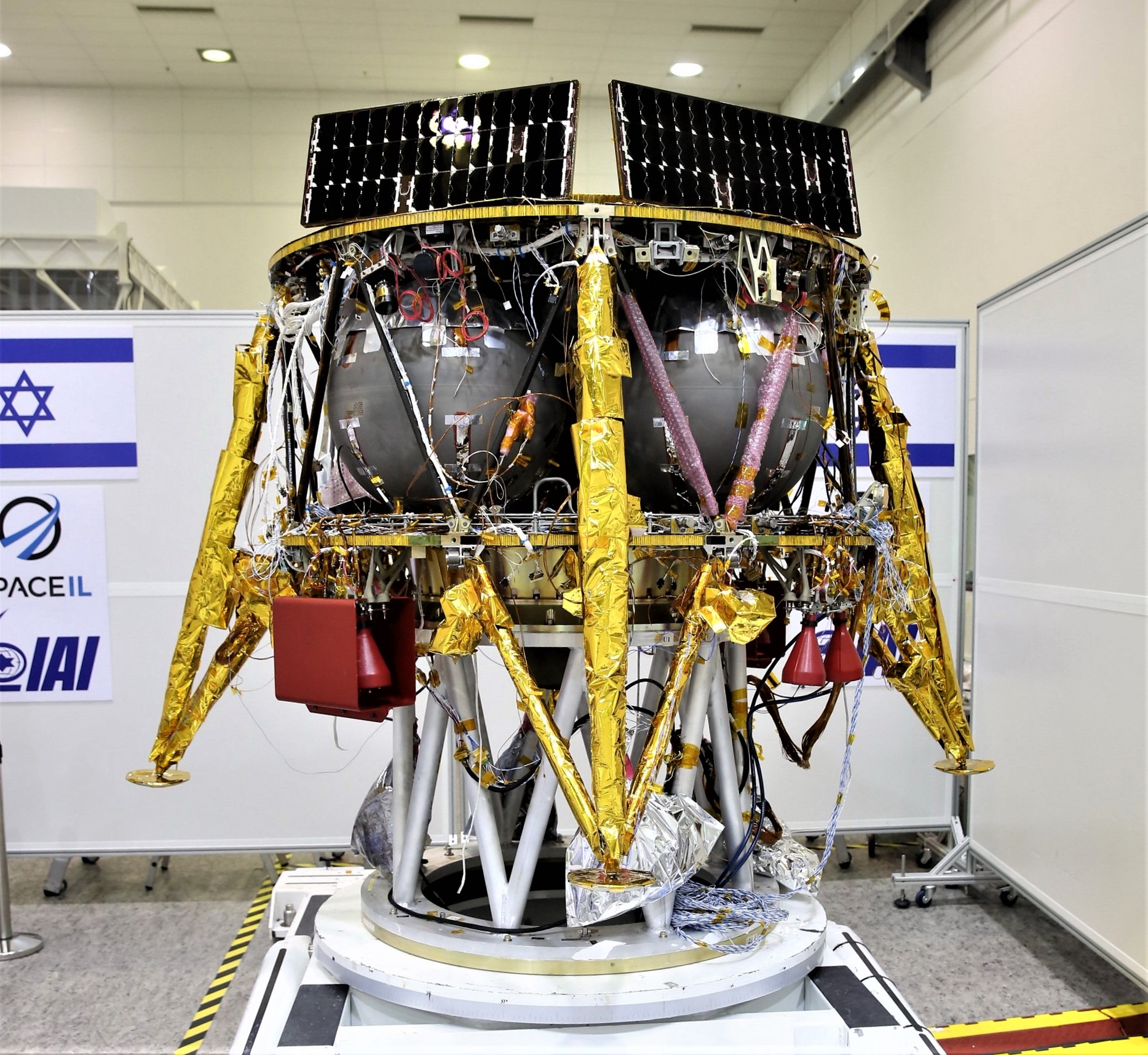
Prior to this geostationary rideshare, SpaceX and Spaceflight Industry’s first mission together – a rideshare of ~70 satellites to low Earth orbit – is expected to occur no earlier than October or November 2018 from Vandenberg Air Force Base, California.
For prompt updates, on-the-ground perspectives, and unique glimpses of SpaceX’s rocket recovery fleet check out our brand new LaunchPad and LandingZone newsletters!
News
Tesla begins Robotaxi certification push in Arizona: report
Tesla seems serious about expanding its Robotaxi service to several states in the coming months.

Tesla has initiated discussions with Arizona transportation regulators to certify its driverless Robotaxi service in the state, as per a recent report from Bloomberg News. The move follows Tesla’s launch of its Robotaxi pilot program in Austin, Texas, as well as CEO Elon Musk’s recent comments about the service’s expansion in the Bay Area.
The Arizona Department of Transportation confirmed to Bloomberg that Tesla has reached out to begin the certification process for autonomous ride-sharing operations in the state. While details remain limited, the outreach suggests that Tesla is serious about expanding its driverless Robotaxi service to several territories in the coming months.
The Arizona development comes as Tesla prepares to expand its service area in Austin this weekend, as per CEO Elon Musk in a post on X. Musk also stated that Tesla is targeting the San Francisco Bay Area as its next major market, with a potential launch “in a month or two,” pending regulatory approvals.
Tesla first launched its autonomous ride-hailing program on June 22 in Austin with a small fleet of Model Y vehicles, accompanied by a Tesla employee in the passenger seat to monitor safety. While still classified as a test, Musk has said the program will expand to about 1,000 vehicles in the coming months. Tesla will later upgrade its Robotaxi fleet with the Cyercab, a two-seater that is designed without a steering wheel.
Sightings of Cybercab castings around the Giga Texas complex suggests that Tesla may be ramping the initial trial production of the self-driving two-seater. Tesla, for its part, has noted in the past that volume production of the Cybercab is expected to start sometime next year.
In California, Tesla has already applied for a transportation charter-party carrier permit from the state’s Public Utilities Commission. The company is reportedly taking a phased approach to operating in California, with the Robotaxi service starting with pre-arranged rides for employees in vehicles with safety drivers.
News
Tesla sets November 6 date for 2025 Annual Shareholder Meeting
The automaker announced the date on Thursday in a Form 8-K.

Tesla has scheduled its 2025 annual shareholder meeting for November 6, addressing investor concerns that the company was nearing a legal deadline to hold the event.
The automaker announced the date on Thursday in a Form 8-K submitted to the United States Securities and Exchange Commission (SEC). The company also listed a new proposal submission deadline of July 31 for items to be included in the proxy statement.
Tesla’s announcement followed calls from a group of 27 shareholders, including the leaders of large public pension funds, which urged Tesla’s board to formally set the meeting date, as noted in a report from The Wall Street Journal.
The group noted that under Texas law, where Tesla is now incorporated, companies must hold annual meetings within 13 months of the last one if requested by shareholders. Tesla’s previous annual shareholder meeting was held on June 13, 2024, which placed the July 13 deadline in focus.
Tesla originally stated in its 2024 annual report that it would file its proxy statement by the end of April. However, an amended filing on April 30 indicated that the Board of Directors had not yet finalized a meeting date, at least at the time.
The April filing also confirmed that Tesla’s board had formed a special committee to evaluate certain matters related to CEO Elon Musk’s compensation plan. Musk’s CEO performance award remains at the center of a lengthy legal dispute in Delaware, Tesla’s former state of incorporation.
Due to the aftermath of Musk’s legal dispute about his compensation plan in Delaware, he has not been paid for his work at Tesla for several years. Musk, for his part, has noted that he is more concerned about his voting stake in Tesla than his actual salary.
At last year’s annual meeting, TSLA shareholders voted to reapprove Elon Musk’s compensation plan and ratified Tesla’s decision to relocate its legal domicile from Delaware to Texas.
Elon Musk
Grok coming to Tesla vehicles next week “at the latest:” Elon Musk
Grok’s rollout to Tesla vehicles is expected to begin next week at the latest.

Elon Musk announced on Thursday that Grok, the large language model developed by his startup xAI, will soon be available in Tesla vehicles. Grok’s rollout to Tesla vehicles is expected to begin next week at the latest, further deepening the ties between the two Elon Musk-led companies.
Tesla–xAI synergy
Musk confirmed the news on X shortly after livestreaming the release of Grok 4, xAI’s latest large language model. “Grok is coming to Tesla vehicles very soon. Next week at the latest,” Musk wrote in a post on social media platform X.
During the livestream, Musk and several members of the xAI team highlighted several upgrades to Grok 4’s voice capabilities and performance metrics, positioning the LLM as competitive with top-tier models from OpenAI and Google.
The in-vehicle integration of Grok marks a new chapter in Tesla’s AI development. While Tesla has long relied on in-house systems for autonomous driving and energy optimization, Grok’s integration would introduce conversational AI directly into its vehicles’ user experience. This integration could potentially improve customer interaction inside Tesla vehicles.
xAI and Tesla’s collaborative footprint
Grok’s upcoming rollout to Tesla vehicles adds to a growing business relationship between Tesla and xAI. Earlier this year, Tesla disclosed that it generated $198.3 million in revenue from commercial, consulting, and support agreements with xAI, as noted in a report from Bloomberg News. A large portion of that amount, however, came from the sale of Megapack energy storage systems to the artificial intelligence startup.
In July 2023, Musk polled X users about whether Tesla should invest $5 billion in xAI. While no formal investment has been made so far, 68% of poll participants voted yes, and Musk has since stated that the idea would be discussed with Tesla’s board.
-

 Elon Musk2 weeks ago
Elon Musk2 weeks agoTesla investors will be shocked by Jim Cramer’s latest assessment
-

 Elon Musk24 hours ago
Elon Musk24 hours agoxAI launches Grok 4 with new $300/month SuperGrok Heavy subscription
-

 Elon Musk3 days ago
Elon Musk3 days agoElon Musk confirms Grok 4 launch on July 9 with livestream event
-

 News1 week ago
News1 week agoTesla Model 3 ranks as the safest new car in Europe for 2025, per Euro NCAP tests
-

 Elon Musk2 weeks ago
Elon Musk2 weeks agoA Tesla just delivered itself to a customer autonomously, Elon Musk confirms
-

 Elon Musk1 week ago
Elon Musk1 week agoxAI’s Memphis data center receives air permit despite community criticism
-

 Elon Musk2 weeks ago
Elon Musk2 weeks agoTesla’s Omead Afshar, known as Elon Musk’s right-hand man, leaves company: reports
-

 News2 weeks ago
News2 weeks agoXiaomi CEO congratulates Tesla on first FSD delivery: “We have to continue learning!”

